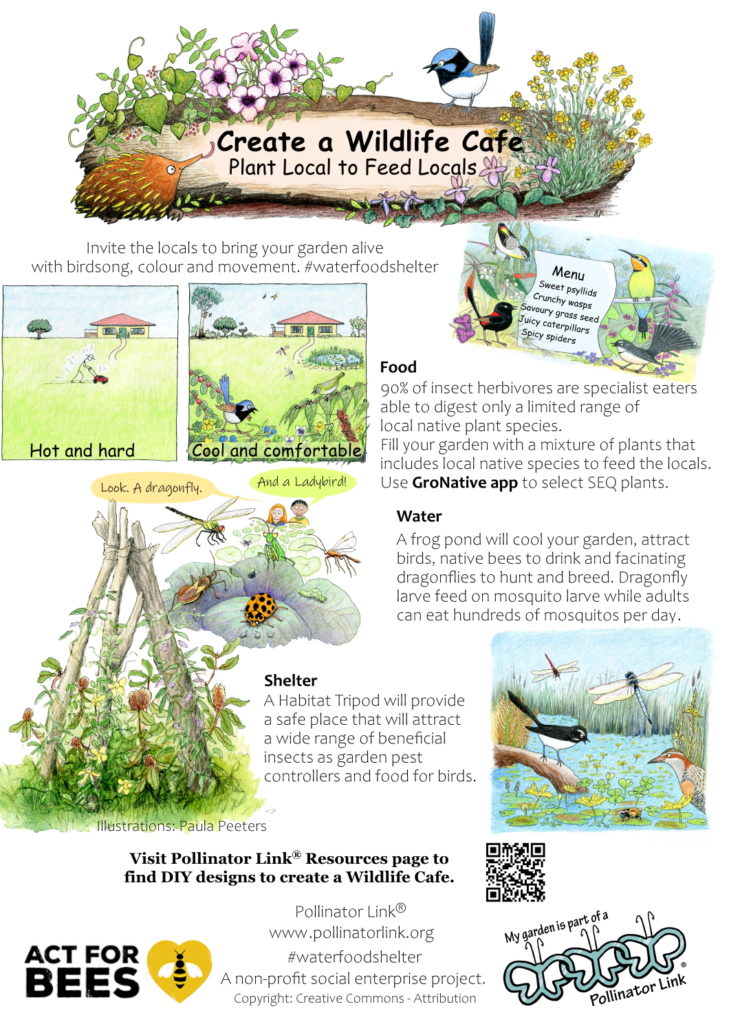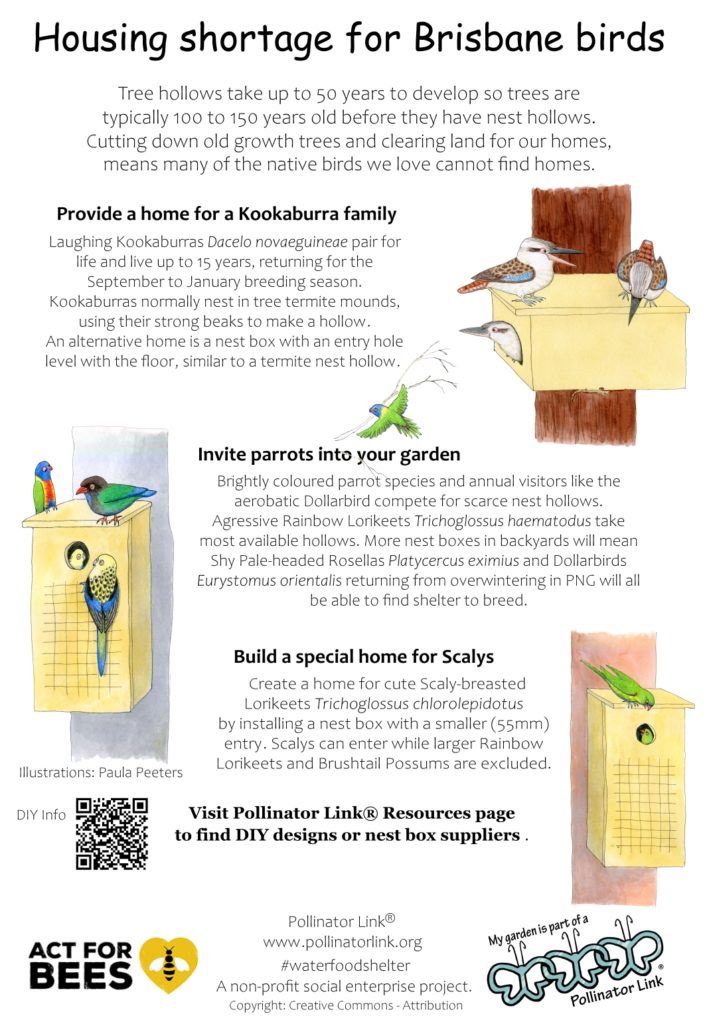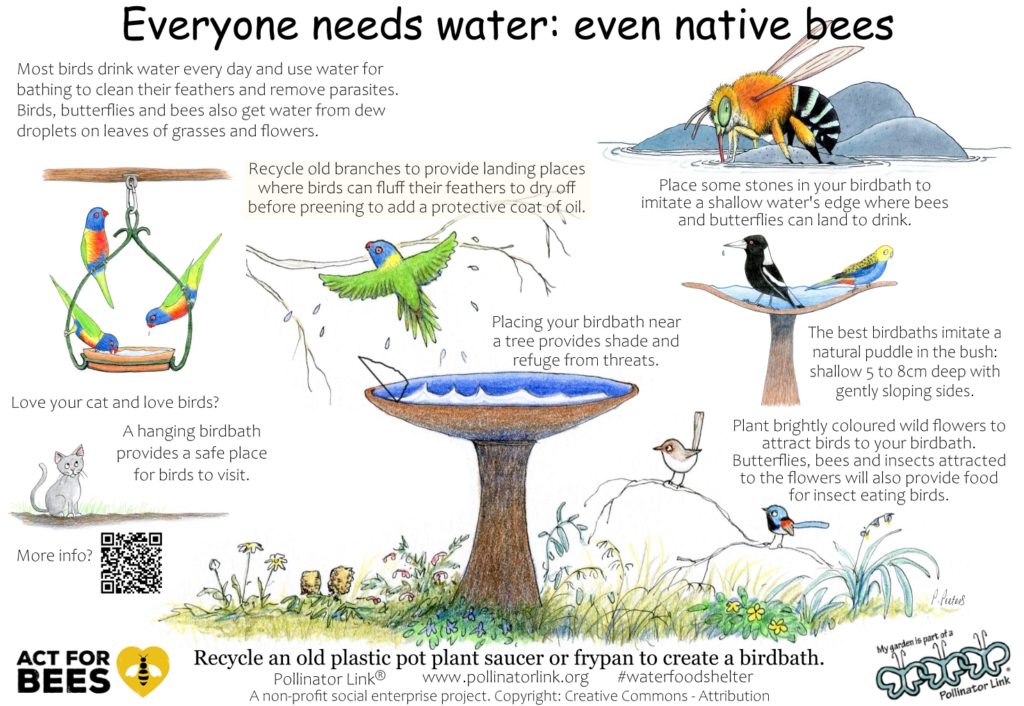
Maximising Biodiversity by Supporting Pollinators
ACT for Bees and Landcare ACT held this event in 22nd February 2020 after a very intense Summer of widespread fires that destroyed an estimated 10 million hectares (100,000 sq kms) of land, 28 people have died and over a billion animals are estimated to have been killed. The actual loss of insects was not estimated. Pollinators are critical to maintaining the natural pollination process for seed production and renewal of our landscape and there are disturbing reports from world wide about their loss.
There has been significant impact of fires and drought across Australia on widespread communities and the natural environment. Many native forests have been burnt that are vital for the health and well being of native bees, European Honey bees and pollinators of many species that are crucial for biodiversity and healthy ecosystems.
It is now even more important for us to plant for and maintain our urban gardens and parklands to protect our bees, butterflies, birds and local wildlife.
Bees, Butterflies, Birds Conference Videos
Thank you Minister Gentleman for your opening speech. We would love you to read of his support for pollinators in the Australian Capital Territory.
Great ideas from Pollinator Link about how to create urban refuges for pollinators. Bringing Bees, Birds, Butterflies back into our gardens. Pollinator Link website https://pollinatorlink.org/
Prof. Saul Cunningham is a researcher the ANU studying mostly crop pollination and bees. Climate variability is right now is at the forefront of our minds. We need to worry about native bees and pollinators that have a small distribution, such as the Great Carpenter Bees from Kangaroo Island. However our native pollinators are well adapted to a variable climate. We should expect resilience in our native pollinators unless you are compounding other threats such as habitat destruction and insecticides. In dry climates we need a broader range of vegetation and flowering plants, to support species richness. Native bees are totally flower dependant and, like plants, their populations vary annually which reflects climate variability – so don’t panic! Only long term research can reflect this resilience and highlight broader patterns. “Protect remnant habitats, restore diverse flowers in diverse places, and reduce chemical use”
Arian McVeigh from the Canberra Seed Savers talks on saving seeds through sharing and linking with our local community. Seeds are fundamental to our lives and do not exist without a pollinators. By planting the right type of seeds, and not using chemicals, we can easily enhance our local biodiversity. Open pollinated heirloom seeds are owned by the community and represents the heritage of several generations in our local region. A living seed bank, planting the same plants over and over again, will adapt to our local conditions and produce the best possible crop whilst working with nature and our pollinators.
Rachel Dawes, continues the discussion on Urban Trees and plantings, and what they are doing to monitor in the ACT. Many considerations go into selecting the right species, wind, existing structures, light, hardiness, drainage, people and more. Also, retaining the habitats in the remaining trees is vital! The MIS 25 ACT Government Urban Plant standards provides a guideline on what to plant in developing the old and new suburbs of Canberra. ACT for Bees has just contributed to this document by providing pollination times and what species use the plants for forage. Various other information is provided to help landscapers, developers, and the everyday gardener choose the right tree for the location. Web app is now being developed! You’ll be able to put in your specifications and out comes a list of suitable species. Link to the ACT Government Tree Species for Canberra : https://www.cityservices.act.gov.au/t…
Janine Baines, part of the horticulture team at the ANBG speaks on planning for planting for our pollinators in our gardens. Where do you start? Create an upper story for shade, then plant underneath. Plant in spring and autumn. Provide water bowls for bees and birds and various heights. Plant for successional flowering and year round protection. Observe your plants and fill in the gaps! With the right plants you can get flowers for up to 10 months of the year.
Ms Caroline Le Couteur ACT Government MLA talks about current policies in this space. We know that there are a decline in trees in our urban environment for various reasons. How do we fix this? Community support, political pressure are two key drivers of change. Projected plantings are to increase but our new suburbs don’t have enough green space. Planting now permitted on verges, so please plant for pollinators along your street. There is a variation out now so go to the Have Your Say website, and have your say! https://www.environment.act.gov.au/…/…
Ms Lawder MLA shared the importance of planting 10s of thousands of trees to replace the older and dying trees in our region to cool our city. We are losing more trees than are being planted and there is a trend towards increasing hard spaces. We have lost more than 10% of our tree canopy, and flowering trees are important for pollinators and also for general cooling . This is something that we need to focus on going forward. Planting more trees and increasing canopy cover for the benefit for all of us.






